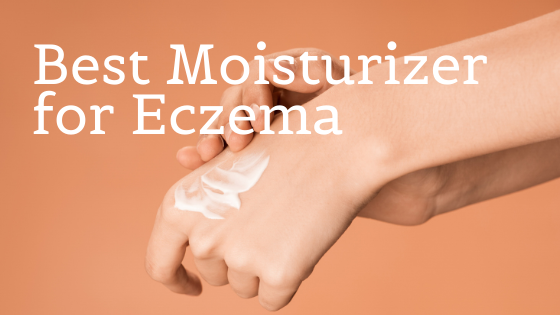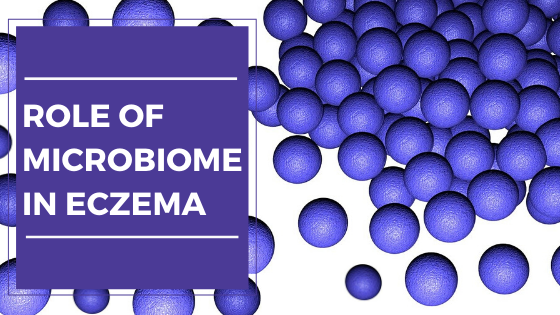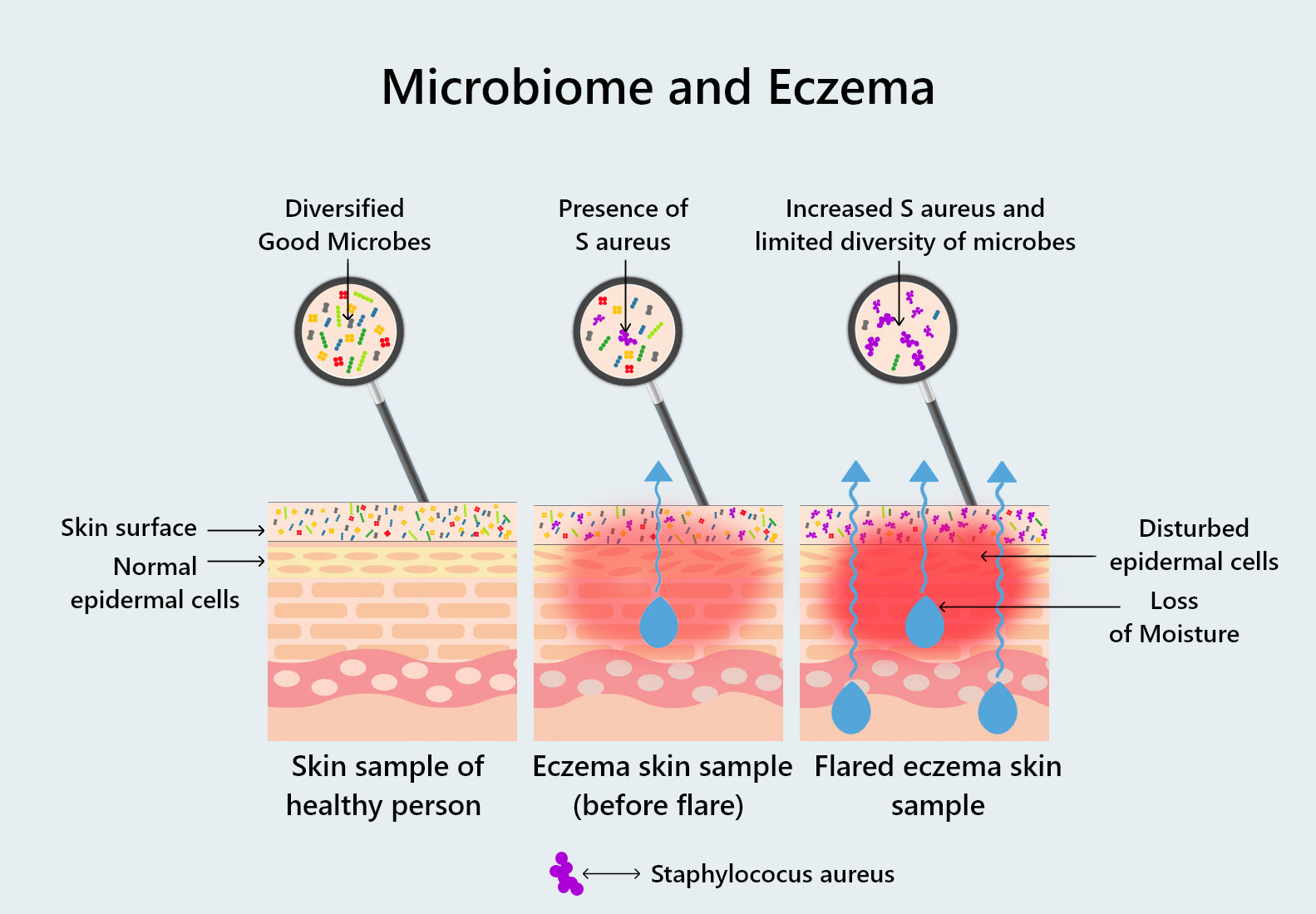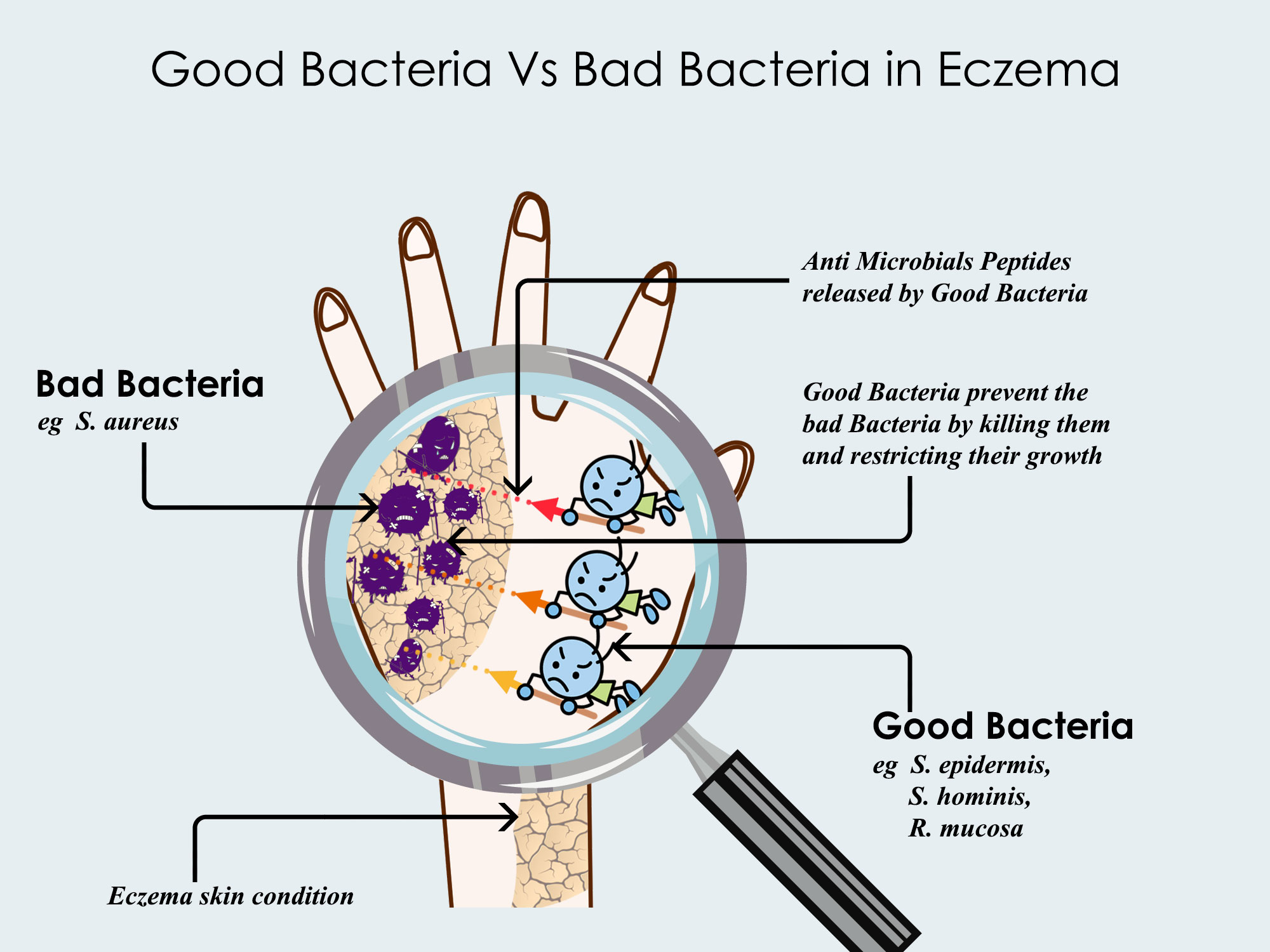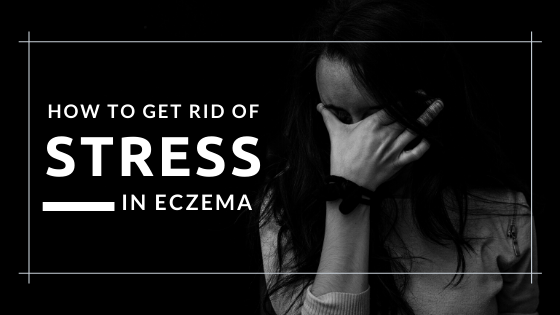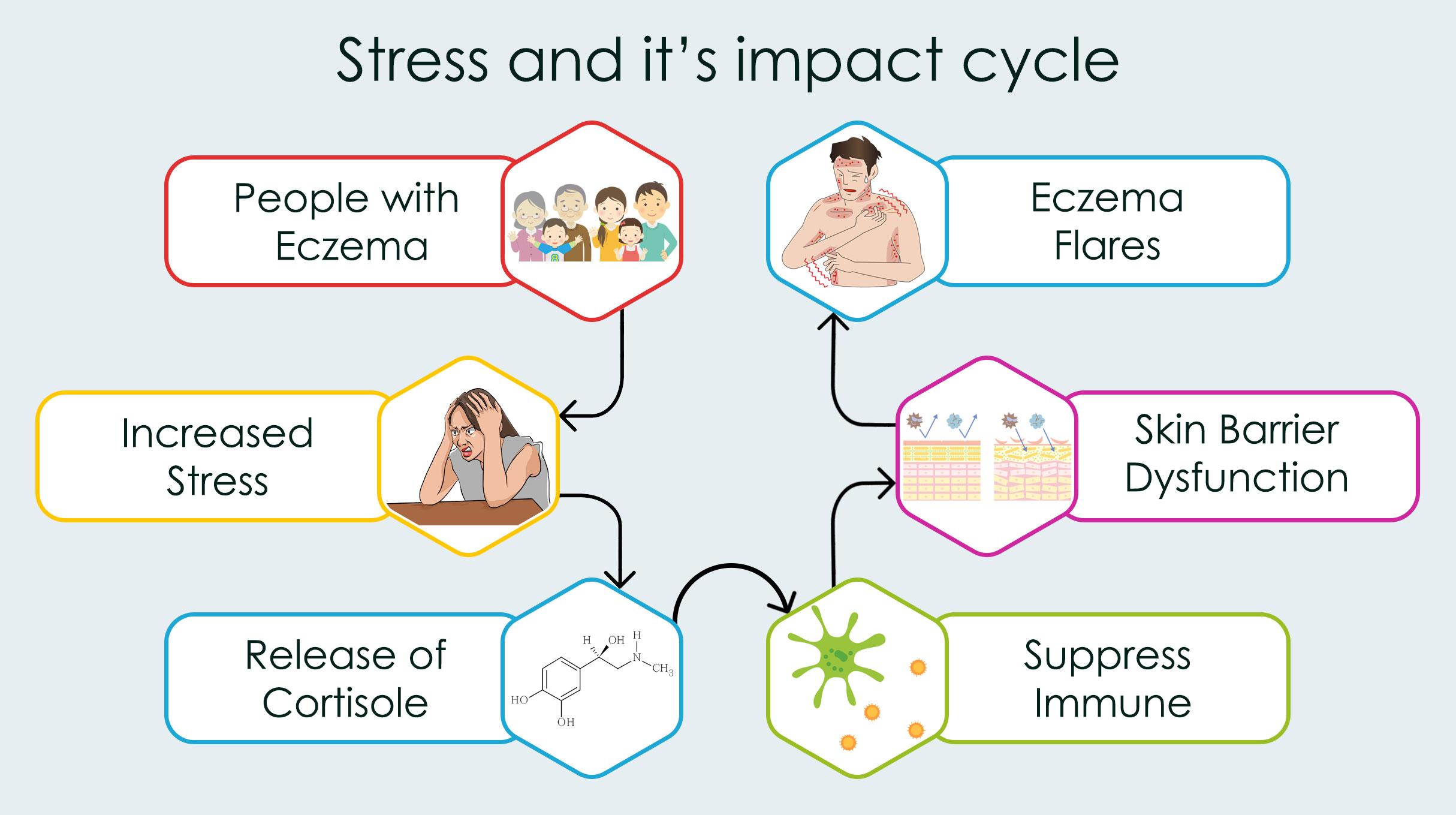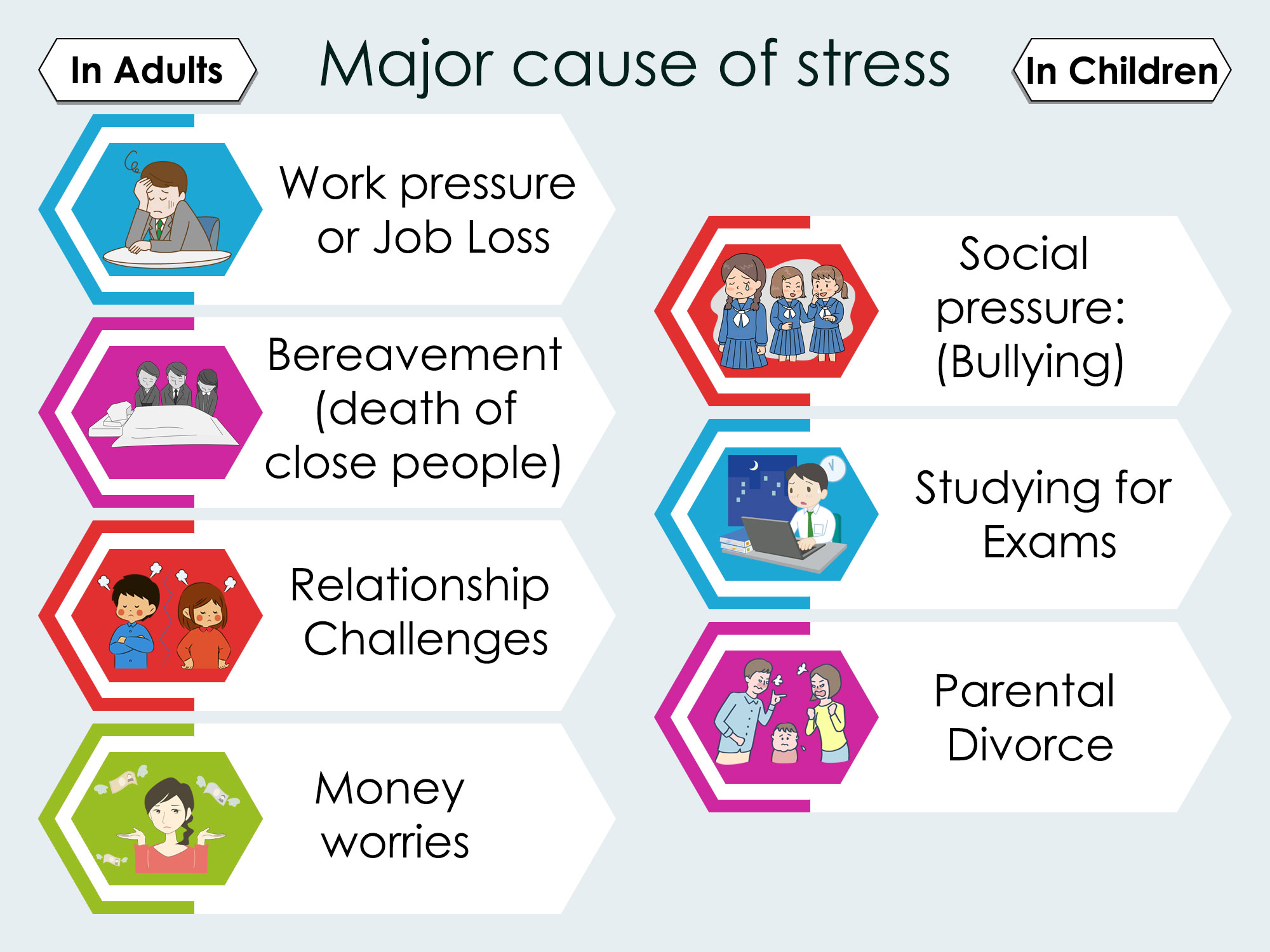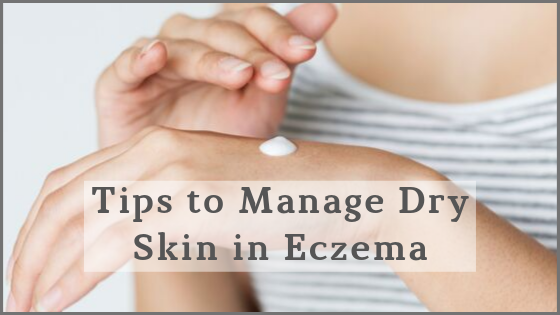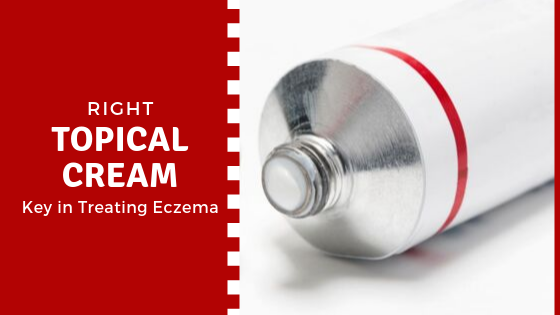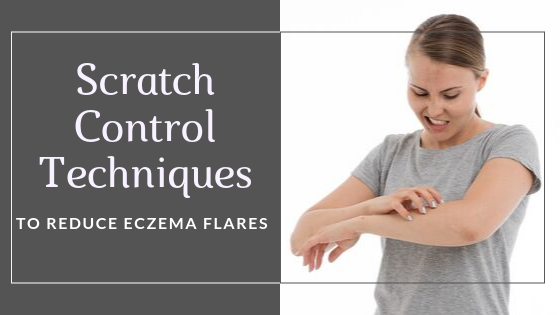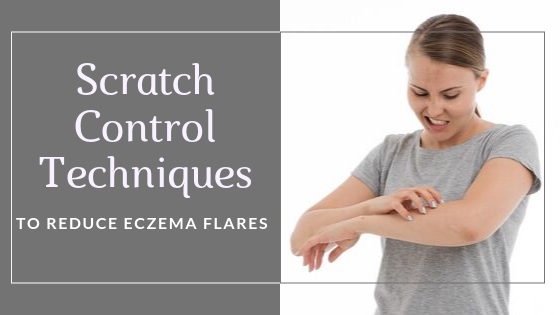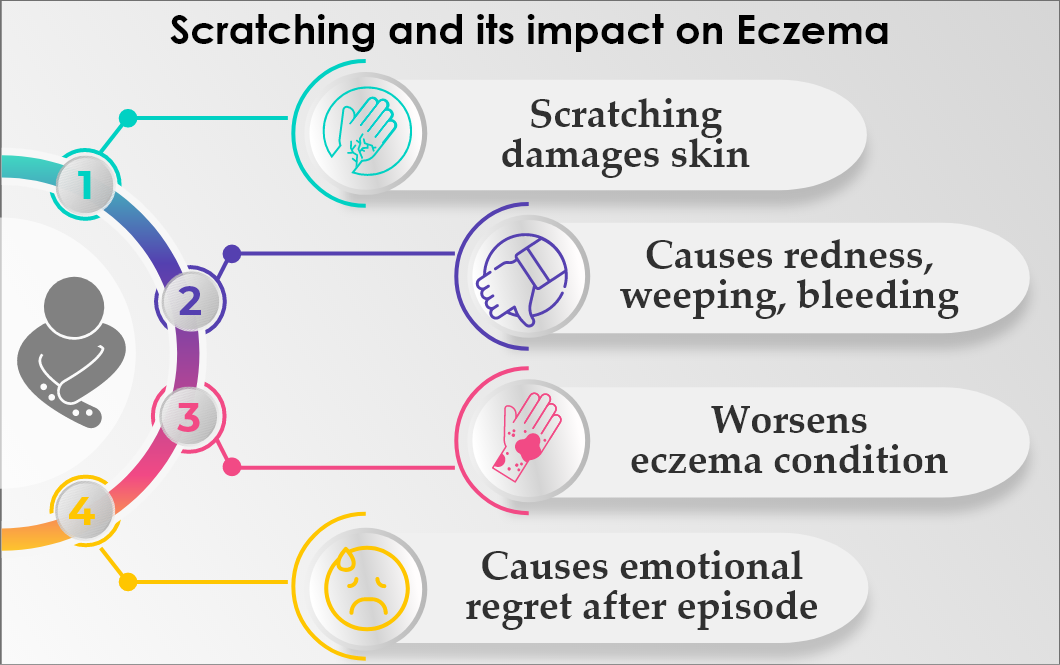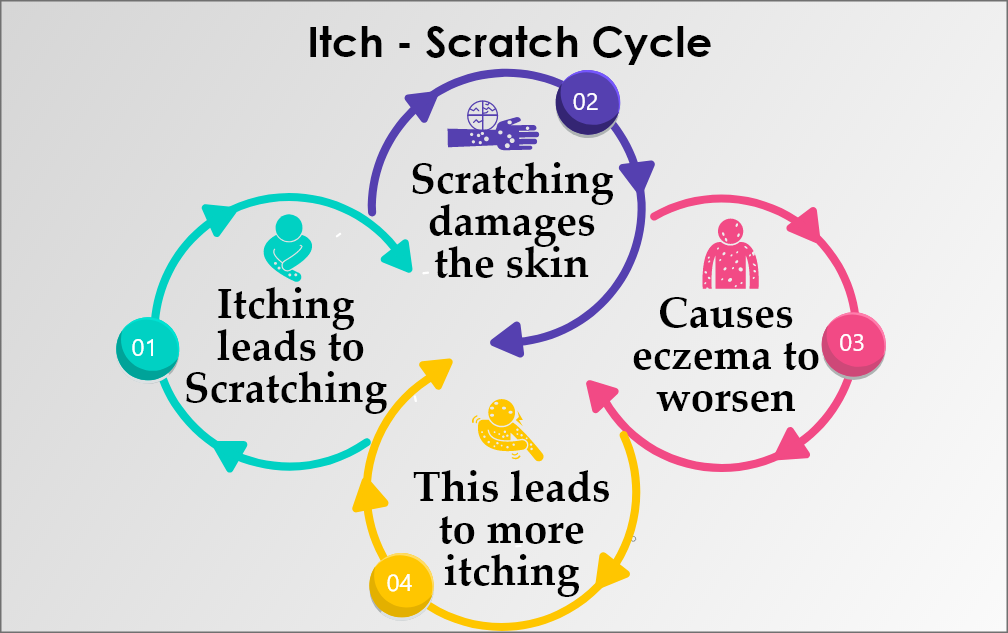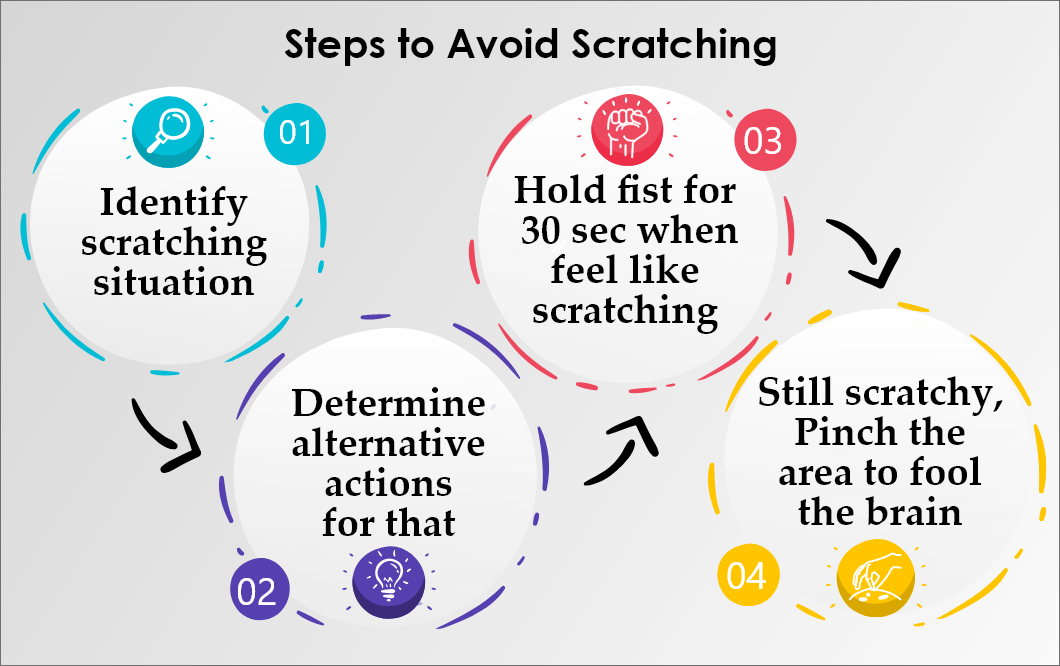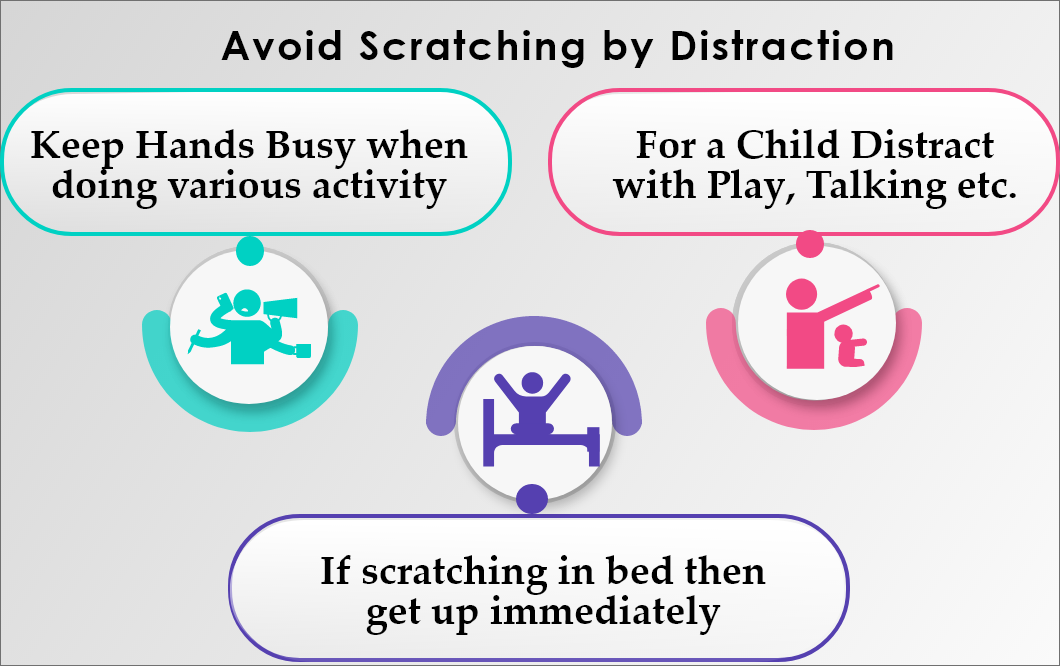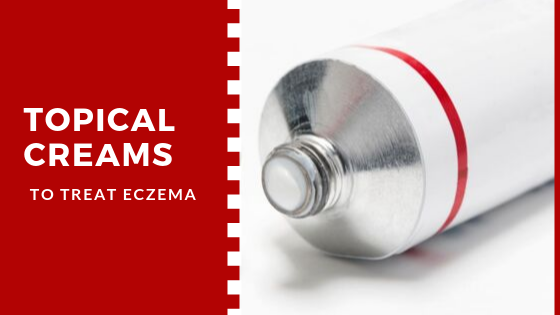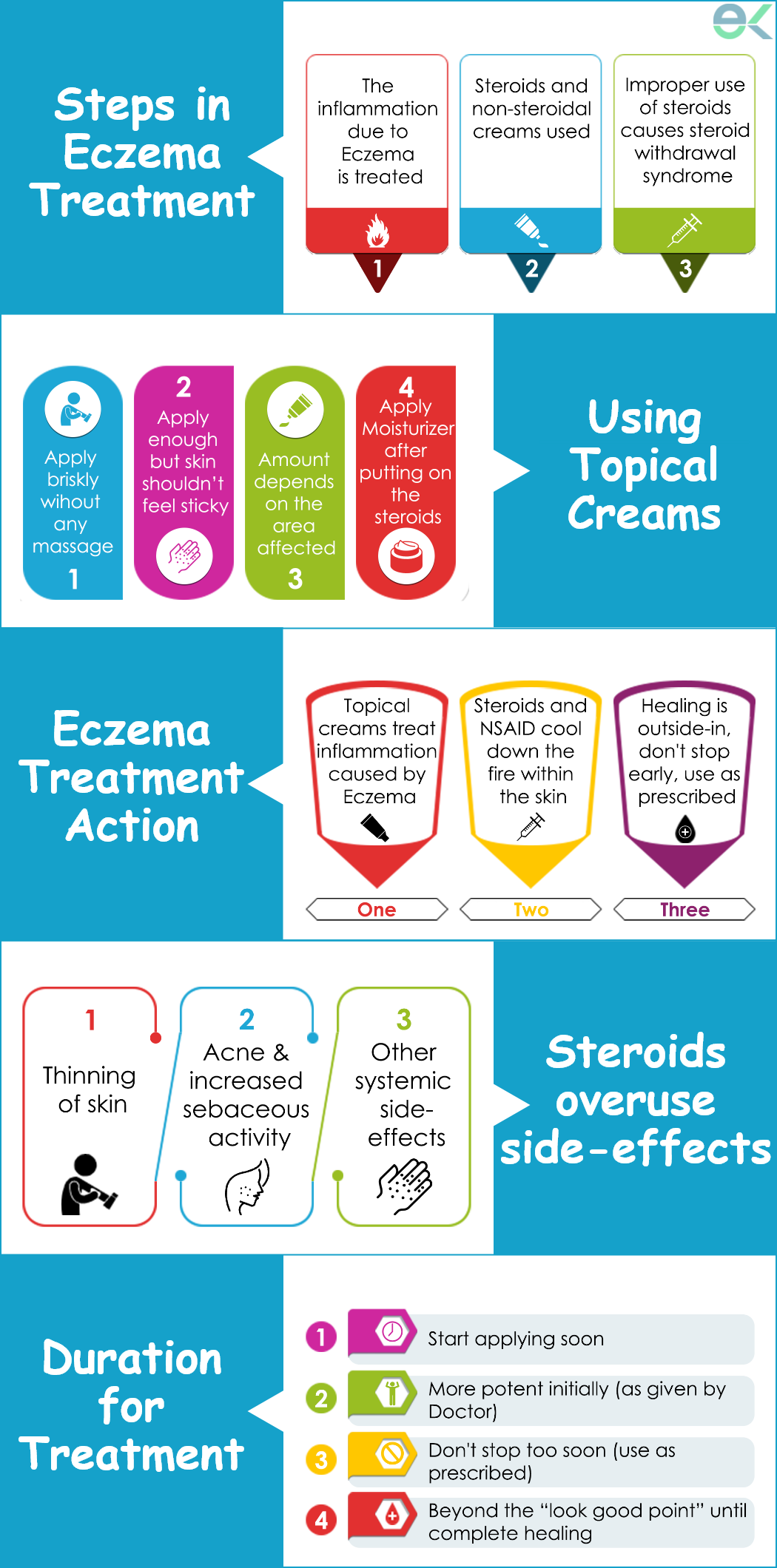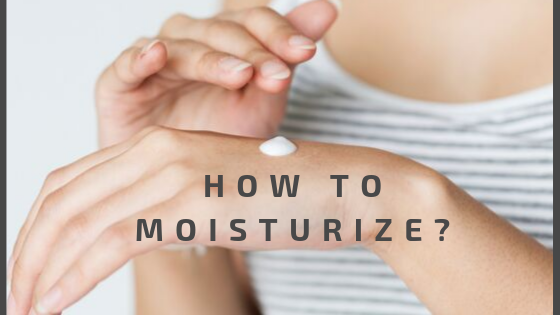Moisturizing Daily must be a key part of your routine especially when you are suffering from eczema. Effective moisturizing prevents the skin from drying. It also helps in restoring the outermost layer of the skin known as stratum corneum or commonly known as a skin barrier that protects us from dehydration and skin infection.
While in-store looking for the best moisturizer for eczema you may come across a number of products all promising to give relief from itch and dry skin. Well, it is obvious to get attracted to the bold marketing words on the package but the true value lies in reading the ingredients of the product.



To ease your job of selecting the right moisturizer, we have got the list of products that preferred by the people to moisturize their skin with Eczema.
Following are the brands rank wise that people preferred most with Ingredients mentioned
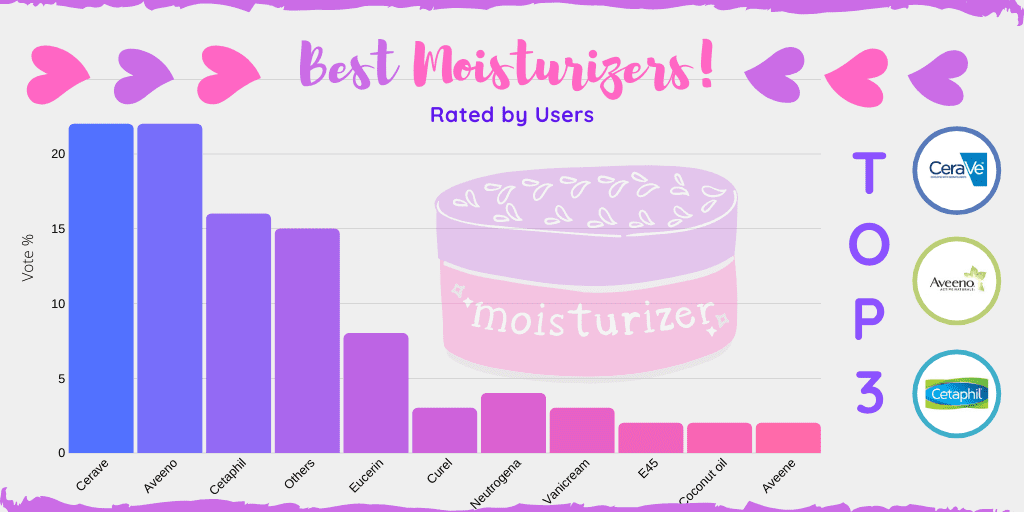


- Cerave
- Aveeno
- Cetaphil
- Eucerin
- Curel
- Neutrogena
- Vanicream
- E45
- Avene
- Coconut Oil
Wherein Cerave, Aveeno and Cetaphil occupied the top three positions in people’s opinions.
Let us see what makes this brand a perfect eczema moisturizing cream manufacturer
Cerave



Cerave features a product called Cerave Eczema creamy oil which specifically for people suffering from Atopic Dermatitis. The product is formulated with ceramides, hyaluronic acid, and safflower oil to help moisturize dry skin and keep it comfortable.
What does Cerave Moisturizer contain?
- Water
- Isononyl Isononanoate
- Propylheptyl Caprylate
- Polyglyceryl-3 Polyricinoleate
- Glycerin
- Carthamus Tinctorius (Safflower) Seed Oil
- Olea Europaea (Olive) Fruit Oil
- Persea Gratissima (Avocado) Oil
- Vitis Vinifera (Grape) Seed Oil
- Magnesium Sulfate
- Sorbitan Monooleate
- Ceramide 3
- Ceramide 6 II
- Ceramide 1
- Niacinamide
- Sodium PCA
- Ophiopogon Japonicus Root Extract
- Allantoin
- Hyaluronic Acid
- Sodium Hydroxide
- Xanthan Gum
- Polyglyceryl-3 Ricinoleate
- Tocopheryl Acetate
- Tocopherol
- Sodium Lauroyl Lactylate
- Phytosphingosine
- Cholesterol
- Carbomer
- Phenoxyethanol
- Ethylhexylglycerin
Top user Comment:
I love using CeraVe for my body, and First Aid Beauty (FAB) Ultra Repair Face Moisturizer for my face. I’ve never tried using CeraVe on my face, but I might give it a shot. It makes my arms and legs feel silky smooth, so I’m a big fan.
Aveeno
Eczema therapy Daily Moisturizing cream
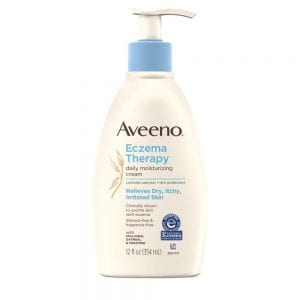


Aveeno’s this product for eczema focuses on renewing and reviving dry itchy skin. Colloidal oatmeal is the special and key ingredient in the cream to nourish and restore the skin’s protective function.
What does Aveeno Moisturizer contain?
- Colloidal Oatmeal 1%
- Water
- Glycerin
- Panthenol
- Distearyldimonium Chloride
- Petrolatum
- Isopropyl Palmitate
- Cetyl Alcohol
- Dimethicone
- Avena Sativa (Oat) Kernel Oil
- Steareth-20, Benzalkonium Chloride
- Ceramide NP
- Sodium Chloride
- Avena Sativa (Oat) Kernel Extract
Top user comment:
I used to have oily skin, but then I got prescribed an acne treatment, so now my skin is quite dry and oily at the same time. Every night I use the Aveeno daily moisturizing body lotion on my face and neck and it works wonders for me:)
Cetaphil
Restoraderm Eczema Soothing Moisturizer
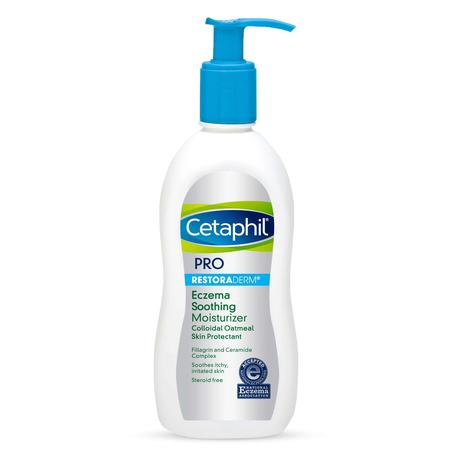


This Cetaphil product for Eczema is formulated with a unique combination of colloidal oatmeal, ceramide and patented Filaggrin technology™ to hydrate and calm dry itchy, eczema and atopic prone skin.
What does Cetaphil Moisturizer contain?
- Colloidal Oatmeal 1%
- Allantoin
- Arginine
- Behenyl AlcoholButyrospermum Parkii (Shea) Butter
- Caprylic/Capric
- Triglyceride, Caprylyl Glycol
- Ceramide NP
- Ceteareth-20
- Cetearyl Alcohol
- Cetyl Alcohol
- Citric Acid
- Cyclopentasiloxane
- Dimethiconol
- Disodium EDTA
- Disodium Ethylene
- Dicocamide PEG-15
- Disulfate
- Glycerin
- Glyceryl Stearate
- Glyceryl Stearate Citrate
- Helianthus Annuus
- (Sunflower) Seed Oil
- Niacinamide
- Panthenol
- Pentylene Glycol
- Sodium Hyaluronate
- Sodium PCA
- Sodium Polyacrylate
- Sorbitol
- Tocopheryl Acetate
- Water
Top user Comment:
Cetaphil cleanser and daily moisturizer have been my HG for 18 years.
Eucerin
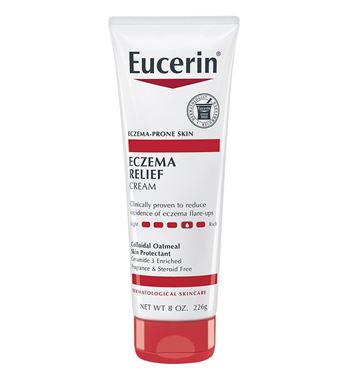


Eucerin Eczema Relief Body Cream is a clinically proven moisturizing formula that relieves and fortifies dry, itchy eczema-prone skin. This fast-absorbing eczema cream is enriched with Colloidal Oatmeal (a skin protectant), Ceramide-3, and Licochalcone (a licorice root extract). This soothing moisturizing cream is gentle enough for everyday use and helps strengthen the skin’s protective barrier.
What does Eucerin Moisturizer contain?
- Colloidal Oatmeal 1% (Skin Protectant)
- Water
- Glycerin
- Ricinus Communis (Castor) Seed Oil
- Mineral Oil
- Cetyl Alcohol
- Glyceryl Stearate
- Caprylic-Capric-Triglyceride
- Octyldodecanol
- Cetyl Palmitate
- PEG-40 Stearate
- Glycyrrhiza Inflata Root Extract
- Ceramide NP
- 1-2-Hexanediol
- Phenoxyethanol
- Piroctone Olamine
- Caprylyl Glycol
- Ethylhexylglycerin
- Benzyl Alcohol
- Citric Acid
Curel
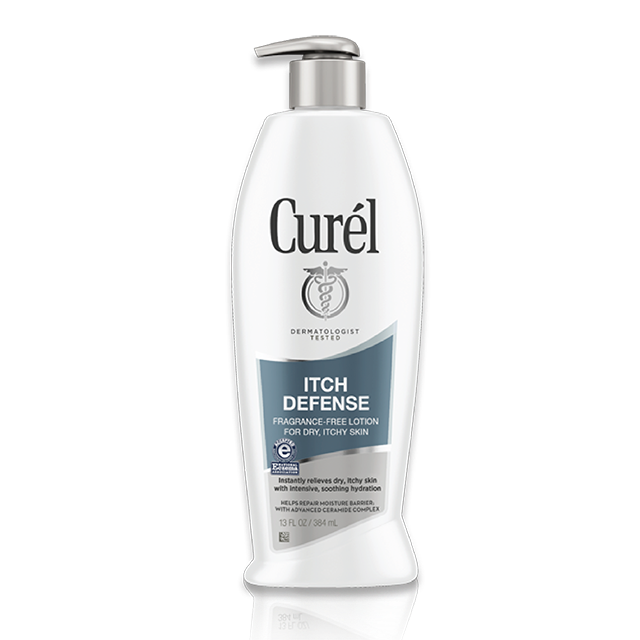


Curél® Itch Défense® Lotion, targeted towards dry skin has Advanced Ceramide Complex which restores skin’s ceramide levels to help retain moisture and prevent symptoms of dry, itchy skin from returning. It gives a special claim that it can be used for people with eczema.
What does Cruel Lotion contain?
- Water
- Glycerin
- Petroleum
- Tapioca starch
- Cetearyl alcohol
- PEG/PPG-17/6 Copolymer
- Dimethicone
- Behentrimonium Chloride
- Isopropyl palmitate
- PPG-15 Stearylether
- Propylene glycol Isostearate
- Panthenol
- Methylparaben
- Benzalkonium chloride
- Ethylparaben
- Olea europaea (Olive) fruit oil
- Cetyl-PG hydroxyethyl Palmitamide
- Butyrospermum parkii (Shea) butter
- Tocopheryl acetate
- Bis-Methoxypropylamido Isodocosane
Neutrogena
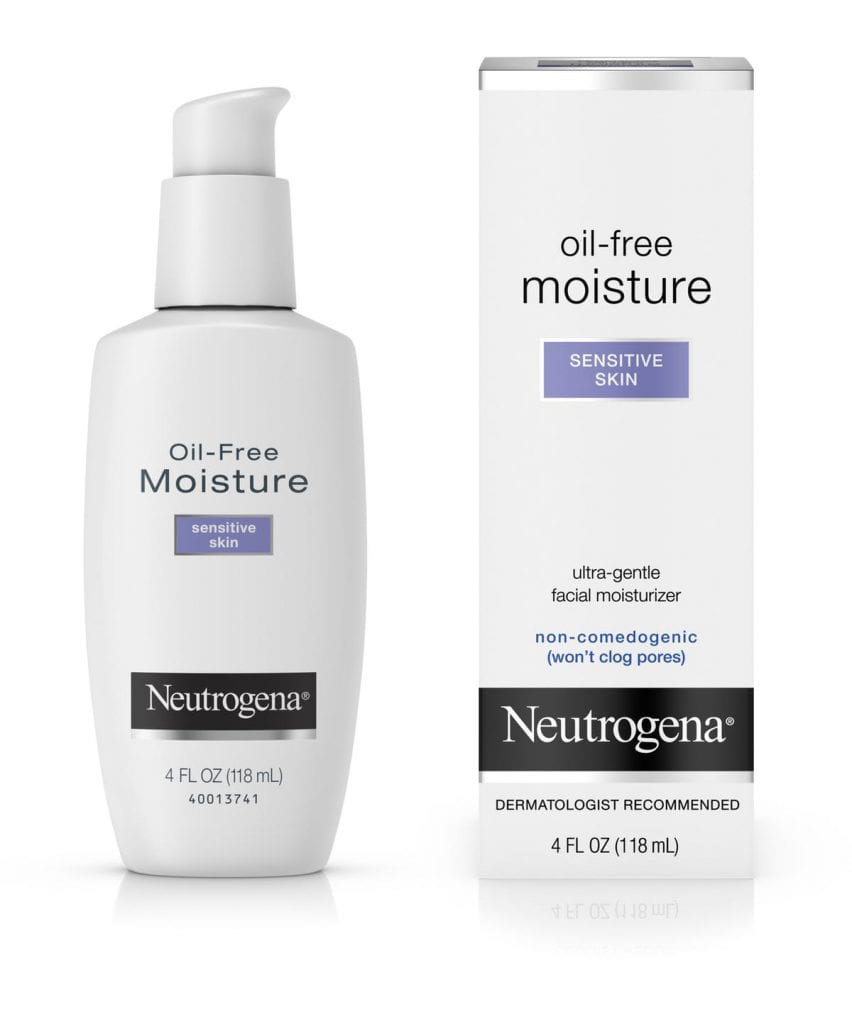


This lightweight, water-based formula of Neutrogena is gentle, the fragrance-free and hypoallergic nature makes it effective for even sensitive skin. It is oil-free and non-comedogenic.
What does Neutrogena Moisturizer contain?
- Water
- C12-15 alkyl benzoate
- Carbomer
- Cetyl Alcohol
- Cyclomethicone
- Diazolidinyl Urea
- Dimethicone
- Ethylhexyl Palmitate
- Ethylparaben
- Glycerin
- Glyceryl Stearate
- Isopropyl Isostearate
- Methylparaben
- PEG-10 Soy Sterol
- PEG-100 Stearate
- Petrolatum
- Propylparaben
- Sodium Hydroxide
- Soybean Glycine Soja Sterols
- Tetrasodium EDTA
Vanicream
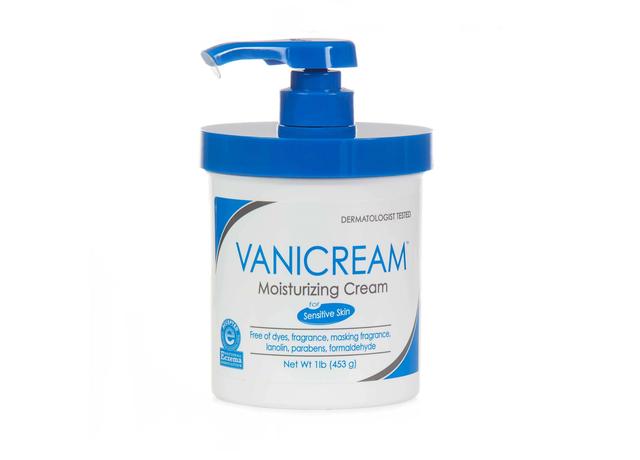


It’s a non-greasy moisturizing cream that is easy to spread, quickly absorbed and non-comedogenic. It Helps restore and maintain a normal moisture level. Soothes red, irritated, cracking or itchy skin. Ideal for skin associated with atopic dermatitis (eczema), psoriasis, ichthyosis, and winter itch. Apart from Cream, the product is also available in the lotion and ointment versions.
What does Vanicream contain?
- Purified water,
- Petrolatum,
- Sorbitol,
- Cetearyl alcohol,
- Propylene glycol,
- Peteareth-20,
- Simethicone,
- Glyceryl stearate,
- PEG-30 stearate, s
- Sorbic acid,
- BHT
Top user comment:
I recently switched to Vanicream, and I am loving the Lite Lotion and the Moisturizer!
E45
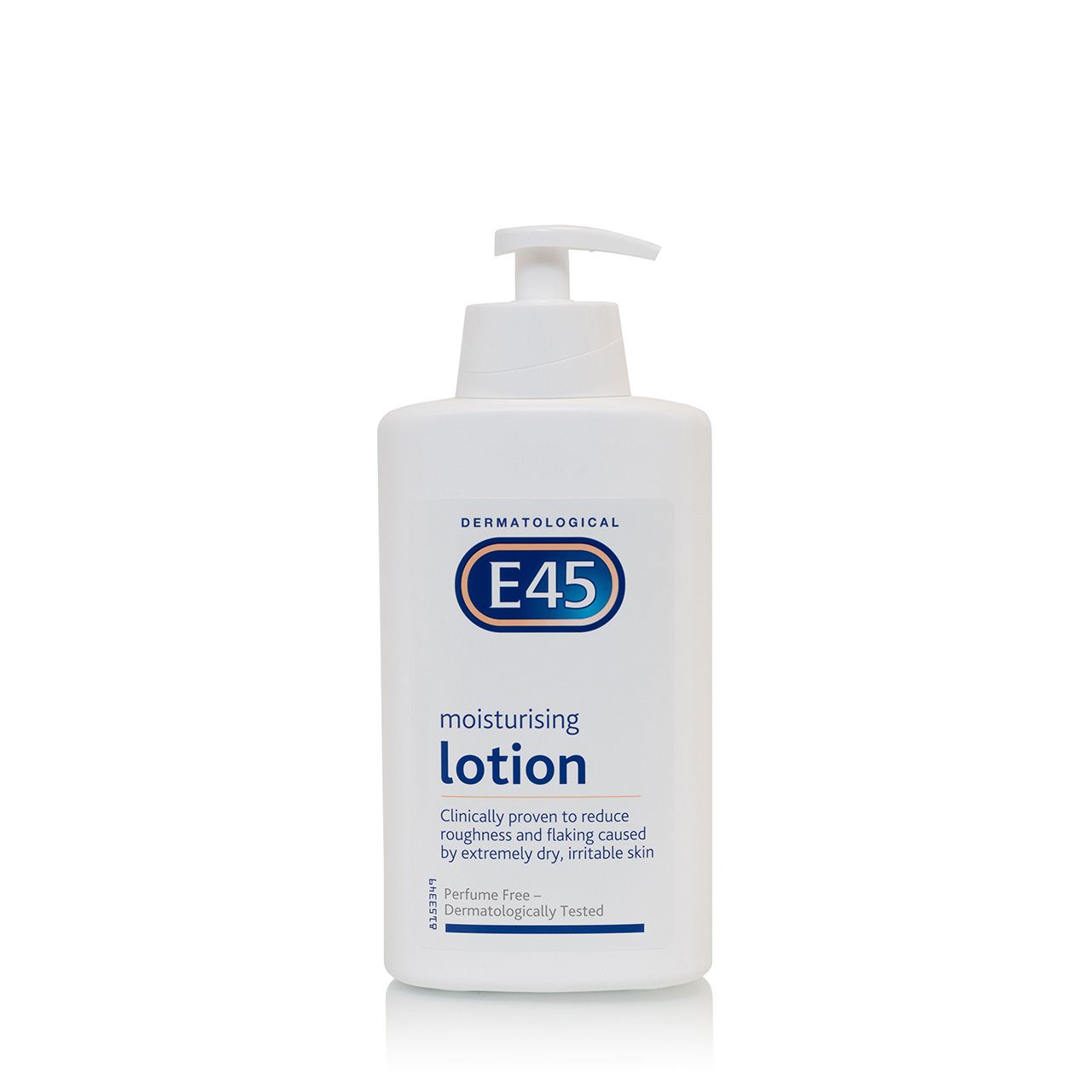


E45 is a dermatologically tested Perfume-Free Lotion which is a light daily dry skin moisturizer that’s perfect for everyday use all over the body, to keep your skin feeling soft, supple and hydrated. E45 Moisturising Lotion contains Medilan™, a purified, hypoallergenic form of lanolin with excellent moisturizing properties. It soothes, protects the skin and more importantly suitable for sensitive skin too.
What does E45 Moisturizing Lotion contain?
- Aqua
- Petrolatum
- Isopropyl Palmitate
- Paraffinum Liquidum
- Glyceryl Stearate
- Ceteth-20
- Hypoallergenic Anhydrous Lanolin (Medilan™)
- Phenoxyethanol
- Methylparaben
- Hydroxyethylcellulose
- Carbomer
- Propylparaben
- Sodium Hydroxide
- BHT
Avene
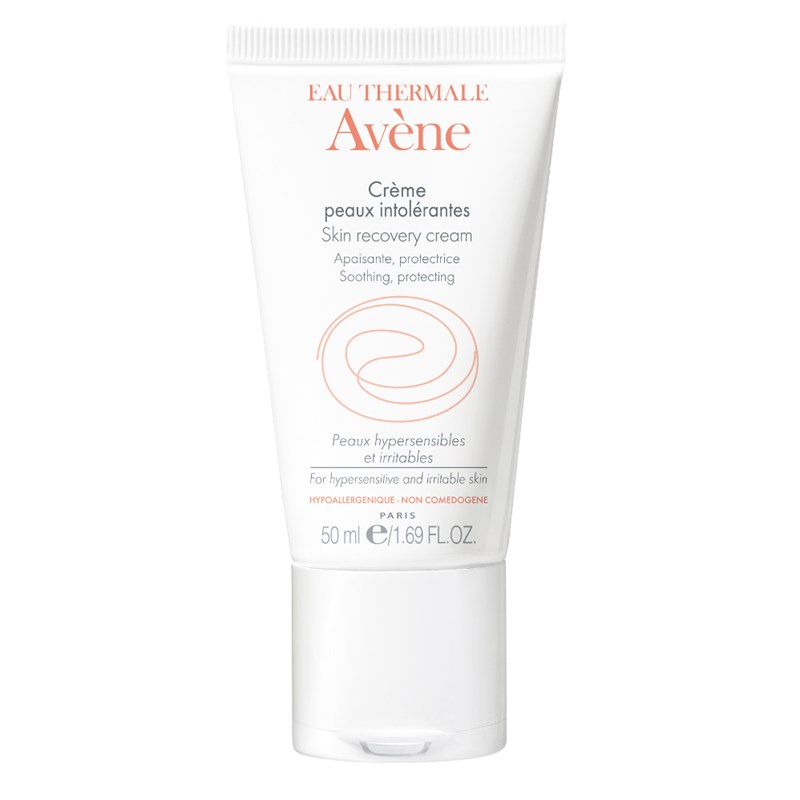


Avene’s RICH moisturizing cream is formulated with minimal ingredients for the highest level of tolerance for hypersensitive and irritated skin. It is formulated with minimal ingredients for maximum tolerance and helps reduce inflammation and reactivity protecting the skin’s barrier
What does Avene Moisturizer contain?
- Aven thermal spring water
- Mineral oil
- Glycerin
- Squalene
- Dimethicone
- Glyceryl Stearate
- Behenyl alcohol
- Serine
- Butyrospermum parkii (Shea) butter
- Carbomer
- Tetrasodium EDTA
- Triethanolamine
- Water
- Xantham gum
Top user comment:
I used Avène for a few years and absolutely zero irritation too, they have great products as well.
Hope this article helps you find the best eczema moisturizer that suits your skin. It was possible because of the contribution of the users and readers like you. In case you feel any product that should be listed under this heading please leave us in the comment. Also, let us know your story about how these products helped you recover from poor skin conditions to inspire fellow readers.
GET IN CONTROL OF YOUR ECZEMA
Use our AI tool to check the severity of Eczema and keep track of your Eczema progress.
